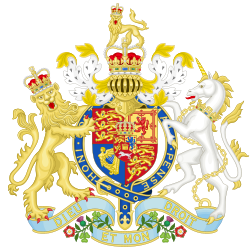History
The precise origins of the Court of Requests are unknown. Spence traces it back to the reign of Richard II, [2] Leadam, rejecting Spence's case, claims there is no official record of the court's existence before 1493, [3] Pollard writes (based on documents discovered after Leadam's work) that it was in existence from at least 1465, [4] while Alexander writes that it first appeared during the reign of the House of York, [5] and Kleineke states that it was created in 1485 by Richard III. [6] Whatever its origin, the court was created as part of the Privy Council, following an order by the Lord Privy Seal that complaints and cases brought to the council by the poor should be expedited. [7] This was as part of the Privy Council; it first became an independent tribunal with some Privy Council elements under Henry VII, with jurisdiction mainly over matters of equity. The court became increasingly popular due to the lack of cost in bringing a case to it and the speed at which it processed them, in contrast with the slow and expensive common law courts, arousing the ire of common law lawyers and judges. [8]

The court originally followed the monarch on his travels around England, visiting Sheen, Langley and Woodstock in 1494. Under Thomas Wolsey the court became fixed in Westminster, hearing cases from poor people and from the servants of the king. [9] It met at the White Hall of the Palace of Westminster and was often referred to as the Court of White Hall. Towards the end of Henry VIII's reign, the court assumed a more professional status with the appointment of two "Masters of Requests Ordinary" to serve as its judges, where the Lord Privy Seal alone had previously heard and delivered judgements. Two additional "Masters of Requests Extraordinary" were appointed under Elizabeth I to accompany her on her progresses around England. Under James I two further Ordinary Masters were appointed, but despite this the court was criticised for the backlog arising from its increasing business. [10]
When the court formally became an independent body in the 16th century, free of Privy Council control, it immediately became vulnerable to attack by the common-law courts, which asserted that it had no formal jurisdiction and that the Court of Chancery was an appropriate equitable body for cases. It was technically true that the court, as it was no longer part of the Privy Council, could not claim jurisdiction based on tradition, but in 1597 Sir Julius Caesar (then a Master of Requests Ordinary) gave examples of times when the common law courts had recognised the Court of Requests' jurisdiction as recently as 1585. [11] The common law courts change of heart was undoubtedly due to the large amount of business deserting them for the Court of Requests, and in 1590 they went on the offensive; writs of habeas corpus were issued for people imprisoned for contempt of court in the Requests, judgments were issued in cases the Court of Requests were dealing with and it was decided that jailing an individual based on a writ from the Court of Requests constituted false imprisonment. [12] Most academics accept that the court never recovered from these blows, and when the English Civil War made the privy seal inoperative, the court "died a natural death". [13] The post of Master of Requests was abolished in 1685.




